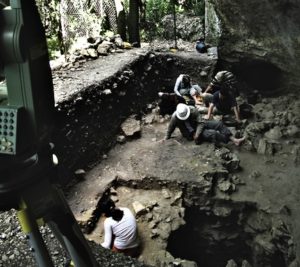
AMERICAN ASSOCIATION FOR THE ADVANCEMENT OF SCIENCE (AAAS)—Scientists have uncovered fossilized modern human remains and tools sandwiched between Neanderthal remains and tools in the stratigraphic record at a site in the Rhône Valley in France, suggesting occupation of the area alternated between Neanderthals and modern humans. The findings provide archaeological evidence that these hominin cousins may have coexisted in the same region of Europe during the same time period and indicate that modern humans did not simply replace Neanderthals there. The study* also pushes back the timeline for the earliest modern European human settlements from about 44,000 years ago (with one possible exception in Greece) to about 54,000 years ago. Fossilized remains of early modern humans in Europe have previously only been identified above the remains of Neanderthals in the stratigraphic record, preventing scientists from demonstrating when and where these hominins may have interacted on the European continent. To help elucidate when modern humans first settled in Europe and whether their arrival may have overlapped with the presence of Neanderthals, Ludovic Slimak and colleagues analyzed the structure of hominin teeth uncovered at Grotte Mandrin, a rock shelter in southern France, to distinguish between Neanderthal and modern human remains. They also analyzed sophisticated stone artifacts found at the site, determining that these were similar to tools commonly found at eastern Mediterranean sites occupied by modern humans. The researchers dated the site’s layers using radiocarbon and luminescence techniques, determining that a layer containing a modern human fossil spans the ages of 56,800 to 51,700 years before the present – significantly earlier than any previously documented modern human remains found in Europe. Altogether, Slimak et al. found evidence of at least 4 phases in which Neanderthals and modern humans alternately occupied the area. The authors found no evidence of cultural exchange between either the successive Neanderthal groups or between modern humans and Neanderthals, suggesting that the populations rapidly alternated between one another without major interactions.
__________________________________
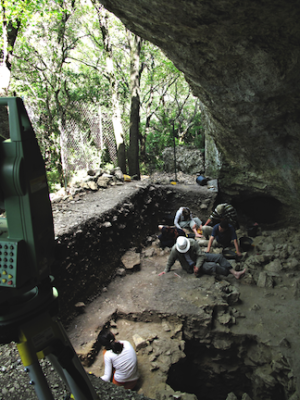
View of the excavation on the Neronian layer dated to 54.000 years old and recording the first Homo sapiens of the European continent. Ludovic Slimak
__________________________________
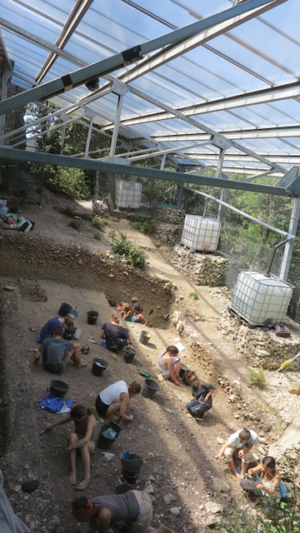
View of the excavations at the entrance of Grotte Mandrin. Ludovic Slimak
__________________________________
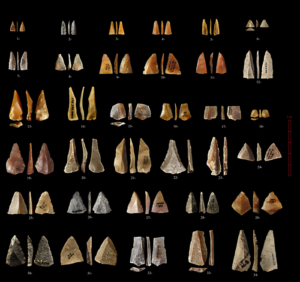
Neronian points. These standardized technologies have no equivalent among the Neanderthal groups before and after the arrival of the first modern humans in Grotte Mandrin. They are technically identical to the point of the Initial Upper Paleolithic made by coeval Homo sapiens from the east mediterranean coast. Laure Metz and Ludovic Slimak
__________________________________
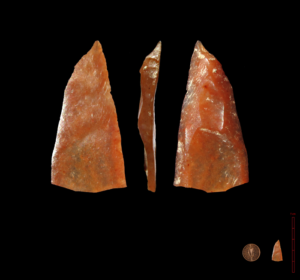
Nanopoint of the Modern Neronian technologies (about 20mm). 1 :1 scale and enlargement. Visual scale is 1 eurocent. Ludovic Slimak
__________________________________
Summary author: Shannon Kelleher
Article Source: AAAS news release.
*Modern human incursion into Neanderthal territories 54,000 years ago at Mandrin, France, Science Advances, 9-Feb-2022 www.science.org/doi/10.1126/sciadv.abj9496
_______________________________
Advertisement





